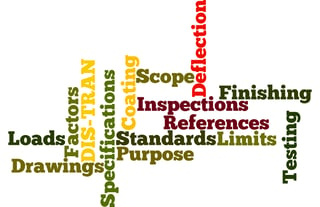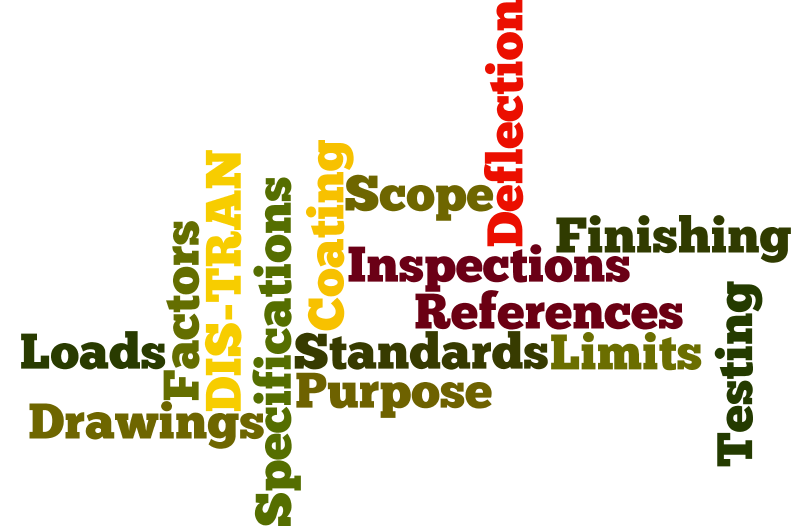Specification are to Steel Structures like...Cherries are to a Banana Split.
Specifications come in all shapes and sizes.
From the very informal 3 page document to the all-encompassing formidable documents. The specification is a tool for the Owner (End User) to convey their minimum project requirements to the supplier. Defined by Wikipedia, it is a set of documented requirements to be satisfied by a material, design, product or service and also a type of technical standard.
In the utility industry we see specifications presented in many different formats. As a result, it is very important that a specification be clear and easy to follow. Be careful about providing multiple specifications and documents that start contradicting one another. In these  situations the Owner’s requirements and overall message can get lost in a sea of documents resulting in different interpretations by the suppliers. This can ultimately lead to proposals that can’t be compared properly, Owners not getting what they want, or additional unforeseen costs. When it comes to fabricating substation and transmission steel structures there are many variables that need to be relayed during the design, detail, and fabrication phases. These specifications provide that direction. Whether you are using an already created specification, updating a previous version or crafting a brand new one, there are certain sections you want to include. Below are 9 sections that are not to be missed when deciding the content for your specifications.
situations the Owner’s requirements and overall message can get lost in a sea of documents resulting in different interpretations by the suppliers. This can ultimately lead to proposals that can’t be compared properly, Owners not getting what they want, or additional unforeseen costs. When it comes to fabricating substation and transmission steel structures there are many variables that need to be relayed during the design, detail, and fabrication phases. These specifications provide that direction. Whether you are using an already created specification, updating a previous version or crafting a brand new one, there are certain sections you want to include. Below are 9 sections that are not to be missed when deciding the content for your specifications.
- Purpose/Scope – This is the heart of the document. This is the owner’s chance to define the purpose of the document and clearly layout their expectations for the scope of work. Example: Intended to serve as a system wide guide for structural design of steel structures.
- References – This section typically lists out the required design standards and any other applicable documents. (e.g. ASTM Standards, ASCE Design Stanards, etc.)
- Submittals – This section typically covers the owner’s expectations of any document to be submitted by the supplier. This includes things like bid proposal requirements listing out the needed forms and design summaries. It also covers formal design and drawing submittal requirements.
- Loading and Geometry – If the scope of work includes design, this section typically covers the minimum information needed by the Structure Designer to design the structures. This would include things like loading criteria, unique weather conditions and terrain for the service area, and any other usual loading conditions the designer should consider. This section also covers the different structure types, general layout of the structures, and the types of connections permitted. (e.g. slip-fit vs. flange, embedded vs. base plated)
- Design – This section typically includes any restrictions to the design, material, field erection, fabrication, etc. Examples of this include anchor bolt circle limits, minimum material thicknesses allowed, deflection limits, aesthetic preferences, weight limitations, etc.
- Fabrication – This covers owner’s expectations of workmanship and quality.
- Finishing/Coating – What type of coating is supposed to be used such has galvanizing, painting, sandblasted, etc.
- Inspection – This section typically covers the type of inspections and testing required for the project.
Of course these are just a few of the main sections. There may be other sections that pertain to your specific product need, corporate formalities and/or industry. No matter what your final Specification Document instills, it is important that you and those that use them agree on what is expected from a product and/or service. This form of communication between the two parties can be a key component to a successful project.
How do you communicate your expectations to your vendors? We would love to hear from you so please leave a comment below and let us know if this information has been useful.
